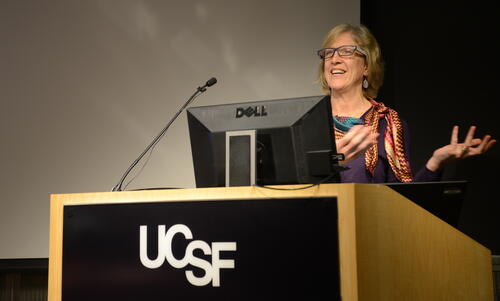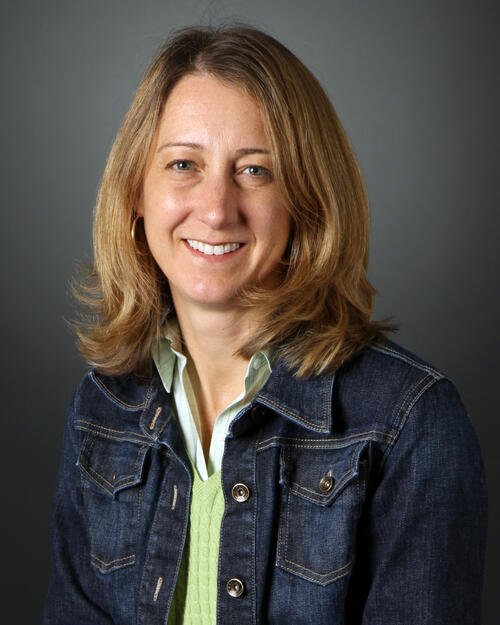Gun violence and suicide by firearm is a public health epidemic
When Americans think of gun violence, we typically think of homicide and the never-ending debate over Second Amendment rights. But we rarely consider gun violence —and the growing rate of suicide by firearms — as a public health epidemic.
There were 36,252 gun deaths in the United States in 2015, according to the Centers for Disease Control and Prevention. America’s firearms homicide rate is 25 times greater than the average of other high-income countries.
In fact, guns have killed more Americans since 1968 than in all the combined deaths on the battlefields of all American wars. These numbers are astounding.
Yet audience members at the recent symposium on “Race, Policing and Public Health,” sponsored by the Stanford schools of law and medicine, learned that the Centers for Disease Control and Prevention haven’t funded research into gun violence since 1997, when Congress passed a bill barring the agency from funding any research that would “advocate or promote gun control.”
It’s just too much of a political hot potato.
The audience of the daylong symposium on March 6 also learned that twice as many Americans commit suicide using a gun than there are homicides in this nation. While black men are 14 times more likely than white men to be shot and killed with guns, older, middle-aged white men have the highest rate of firearm suicide.
“Who knew that firearm violence was increasingly an old white guy problem?” said Garen Wintemute, an emergency physician, and director of the Violence Prevention Research Program at UC Davis School of Medicine.
Wintemute, one of the country’s leading experts on the public health crisis of gun violence, said the aggregate annual cost of firearm deaths is about $229 billion per year after considering the full range of costs: prison terms, lost wages and the law enforcement costs to the American taxpayer.
“So far we have taken a traditional risk-based focus on the problem,” he said. “But there is a complementary approach, the population health approach, which suggests perhaps we should look at the burden of illness.”
Wintemute added the problem is so widespread that “elements of our society who do not think they have a stake in the problem — are so wrong.”
David Studdert, a faculty member at Stanford Health Policy and a professor of law and professor of medicine, moderated the panel. In a special communication in JAMA Internal Medicine, Studdert and colleagues analyzed the federal laws that protect firearm dealers and makers from tort litigation.
“Garen made the crucial point that gun violence is not one epidemic, but several sub-epidemics, each with very different properties and racial profiles,” Studdert said. “While firearm homicide rates are highest among young black men, rates of firearm suicide are highest among middle-aged and elderly white men. These different sub-epidemics clearly call for different policy responses.”
Also speaking at the conference attended by health and law faculty and students from Stanford, UC San Francisco and UC Berkeley, were Marcella Alsan, a physician and economist at Stanford Health Policy; Charles H. Ramsey, the former police commissioner of the Philadelphia Police Department who is now a visiting fellow at Drexel University; Suzy Loftus, assistant legal counsel at the San Francisco Sherriff’s Department; and Jeff Rosen, the district attorney for the County of Santa Clara.
“It was terrific opportunity to get the perspectives of both public health researchers and law enforcement leaders on the problem of gun violence,” Studdert said. “These perspectives don’t intersect as often as they should.”
Ramsey, who also worked in the Chicago Police Department before heading up the departments in Washington, D.C. and then Philadelphia, was asked whether the fatal shooting of black men by white police officers is new and on the rise.
“No, it’s not new,” said Ramsey. “I think what’s new is social media and cable news; those things are new. Now you have video that’s played over and over and over again on cable news, so it does give the impression that things are more severe now than they have been in the past.”
According to the Washington Post’s Fatal Force tracker of deadly shootings by police, 963 people were shot and killed last year, down from 992 in 2015. While 40 percent of those killed were black, African-American men make up a mere 6 percent of the nation’s population.
A student asked Ramsey whether there was implicit bias against African-American men by white police officers who target black communities.
“There’s not a person in this room who doesn’t have implicit bias, we all have it,” he said.
There were 277 murders in Philadelphia last year, down from 391 a decade earlier.
“But 85 percent of the homicides victims in Philly were African-American, due to poverty, poor housing, high unemployment and drug use,” Ramsey said. “They’re in these concentrated pockets. So I’m trying to make a decision about where I should deploy my assets. Where do you think I should put them, in Chinatown?”
Ramsey finds it disturbing that neither the FBI nor the Centers for Disease Control and Prevention keep up-do-date statistics on the number of police-involved shootings, limiting transparency about the extent of the problem.
As Co-Chair of the President’s Task Force on 21st Century Policing, convened by President Barack Obama in 2014, Ramsey said community policing is key to ending the mistrust and fatalities among officers and civilians.
“Every cop in Philly starts on foot patrol, they’re on the ground and when they’re out there and you start to meet Miss Jones and Miss Smith, who are afraid to come out, you start to get a more balanced sense of who is actually a threat to that community.”
All the videos from the daylong symposium can be watched here.



